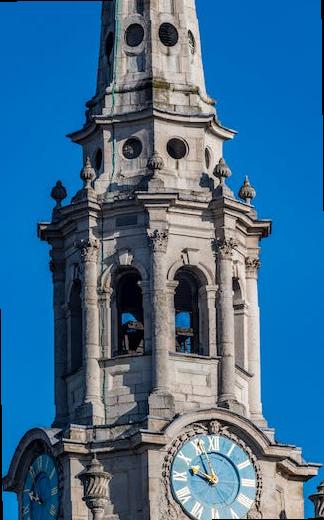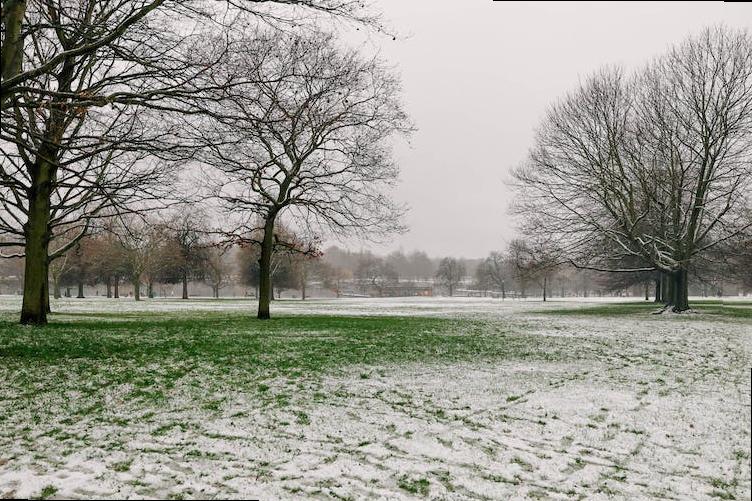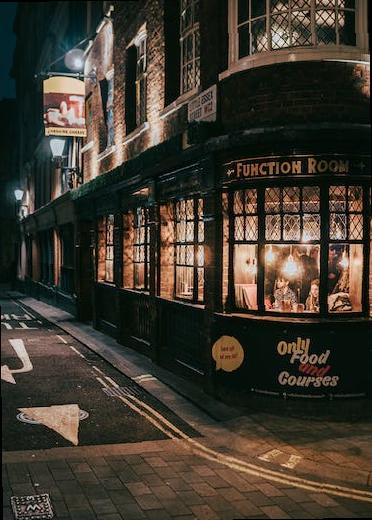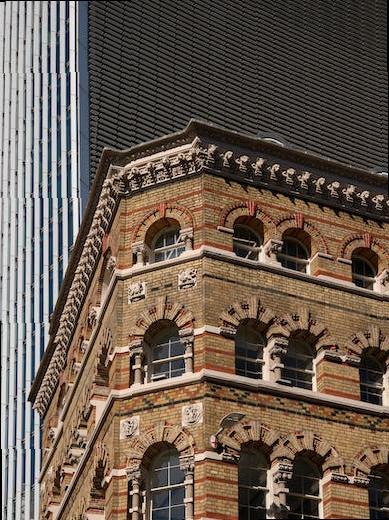London is a bustling city, offering a plethora of sights, sounds, and experiences that attract millions of tourists each year. If you’re planning on navigating its public transportation system, there are plenty of travelcard options to choose from which can get quite overwhelming.
In particular, the London Overground is an extremely popular mode of transportation that helps commuters and tourists get around the city with ease. It operates within important regions of London, stretching out to the suburbs in both north and south London. The London Overground is particularly known for its spacious and well-equipped trains that offer a comfortable ride.

When it comes to the cost of travel on the London Overground, it depends on the type of travelcard you choose. Single tickets start at £2.40, while daily caps have a set limit of £7.20. However, money can be saved by opting for one of the various travelcard options available. These include daily, weekly and monthly travelcards, which can save you money if you’re planning to spend an extended amount of time in London.

With so many travelcard options, it’s important to fully consider your needs and budget when travelling on the London Overground, to ensure that you’re getting the best value for your money.
Travelcard
A Travelcard for London Overground depends on the zones of travel, with prices set according to daily and weekly usage. The cost for a single journey on London Overground is determined by the travel zones that the journey involves, and a daily cap limit applies for passengers using the Oyster or contactless payment methods, including the use of Travelcards.
The cost of a Travelcard for Zone 1-6, which covers the vast majority of London and its surburbs, for one day is £13.50, while the cost of a weekly Travelcard is £60.20. The pricing options vary according to the zones, with the highest zone-based Travelcard for Zone 1-9 priced at £102.70 for a seven-day period.
In conclusion, a Travelcard is an affordable option for traveling on the London Overground, providing cost-effective and flexible access to the city’s transport network. London’s rainy day activities are plentiful, and visitors may wonder how often does it rain in London? However, travelers can stay dry and enjoy all that the city has to offer by utilizing the convenient Travelcard system.
Prices
The price of London Overground varies depending on the zones of travel. Single fares for travel in Zone 1 start at £2.40, while fares for travel in Zones 1-2 start at £2.90. For the entire Overground network, which includes travel in Zones 1-9, prices for a single journey start at £5.40. Weekly travelcards cost £36.10 for Zones 1-2, while monthly travelcards cost £138.70 for Zones 1-2. Knife crimes have been a concerning trend in recent years, with many people searching for information on how often there is a stabbing in London.
Zones
The cost of a travelcard for London Overground and Underground trains is based on the zones that you will travel in. The more zones you cover, the more expensive your travel costs will be. In general, the cost of travel from Zone 1 to Zone 2 will be cheaper than travel from Zone 1 to Zone 6. The cost also depends on the type of ticket that you purchase, such as a single or return ticket, or a weekly or monthly pass.
If you’re looking for the best areas of London to live, consider Hackney as a vibrant and dynamic option. Depending on which stations you travel from and to, Hackney is situated in Zones 2 or 3, which allows for easy access to central London without the higher costs of living in Zone 1. Additionally, the Overground network provides many direct routes to different parts of the city, making travel convenient and accessible for residents.
Off-Peak
Off-peak refers to the time when there is less demand for public transportation. In the context of the London Overground, off-peak hours are generally during weekdays before 6:30 am, between 9:30 am and 3:30 pm, and after 7 pm, and all day on weekends and public holidays. During off-peak hours, the price of London Overground fares are generally cheaper compared to peak hours.
The cost of London Overground during off-peak hours depends on the zones traveled. For example, a single fare from Zone 1 to Zone 2 during off-peak hours costs £2.90 for adults and £1.50 for children with a Zip Oyster photocard. A seven-day adult off-peak pass from Zone 1 to Zone 2 costs £26.00, while a monthly pass costs £99.60.
It is worth noting that fares may vary depending on the payment method used. For instance, Oyster Cards offer discounted fares compared to paper tickets. Additionally, passengers can also benefit from contactless payment options that offer pay-as-you-go fares.
Overall, Off-peak fares can be a cost-effective option for passengers traveling on the London Overground, especially those who can be flexible with their travel times.
Peak Hours
Peak hours are the busiest times of the day when many people use the London Overground. The London Overground is the train service that runs across London and many other parts of the South East of England. The cost of using the London Overground during peak hours is higher than during off-peak hours. The current cost of a peak single fare when using an Oyster card is between £2.40 and £5.10, depending on the zones travelled. The cost of a peak return ticket is also higher than a single fare.
The peak hours for the London Overground are typically between 06:30 – 09:30 and 16:00 – 19:00, Monday to Friday. During these times, there are more passengers travelling, which can cause overcrowding on trains and platforms.
To save money on train fares, passengers are encouraged to travel during off-peak hours. The cost of a single fare during off-peak hours is between £1.50 and £2.80, depending on the zones travelled. Off-peak travel times are typically outside of the peak hours, including weekends and public holidays.
In summary, the London Overground is more expensive during peak hours, which are typically 06:30 – 09:30 and 16:00 – 19:00, Monday to Friday. The cost of a peak single fare when using an Oyster card is between £2.40 and £5.10, depending on the zones travelled. To save money, passengers are encouraged to travel during off-peak hours, when the cost of a single fare is between £1.50 and £2.80.
Oyster Card
An Oyster card is a smart card used to pay for public transport in London. The cost of using an Oyster card on the London Overground varies based on several factors, such as the time of day, the zone traveled, and whether it is a peak or off-peak time.
For example, in 2021, using an Oyster card for a single journey on the London Overground costs £2.40 if made during peak hours (Monday to Friday between 6:30 am and 9:30 am, and 4:00 pm and 7:00 pm), and £1.60 if made during off-peak hours or on weekends. As the journey’s distance increases, the cost may also vary, depending on the zones that are traveled through.
In addition to the single-journey charge, Oyster card users can purchase daily and weekly caps that provide unlimited travel in specific zones. The daily cap price ranges from £7.20 to £15.00, while the weekly cap price ranges from £36.10 to £63.80, depending on the zonal coverage.

Overall, using an Oyster card on the London Overground is an affordable and convenient way of traveling in the UK’s capital city, providing access to a vast network of trains and buses.
Fare Calculation
The fare calculation for London Overground trains is based on several factors. The cost of a ticket on the London Overground depends on the zone(s) travelled in, the time of day during which the journey is made, the type of ticket, and the method of payment.
For London Overground travel, the Transport for London (TfL) fare system categorizes London into multiple zones. The number of zones travelled in determines the cost of the ticket. The more zones travelled, the higher the fare will be.
The time of day when the journey is made also influences the cost. Peak hours are weekdays from 6:30 am to 9:30 am and 4 pm to 7 pm. During these hours, prices are higher than during off-peak times.

The type of ticket purchased also affects the cost. Single-use tickets cost more per journey than pay-as-you-go Oyster or contactless payment methods. Travelcards and passes may provide discounts for frequent travellers.
Finally, the method of payment can also impact fare calculation. Oyster cards or contactless payment methods are cheaper than purchasing single tickets with cash.
In summary, the cost of London Overground travel relies on multiple factors: the number of zones travelled, the time of day during which the journey is made, the type of ticket, and the method of payment. By considering these variables, passengers can effectively manage their travel expenses on the London Overground.

P.S. Conclusion
In conclusion, the cost of using the London Overground varies depending on several factors such as the type of ticket, time of the day, and distance traveled. The fare for a single journey within zones 1-4 is currently £2.50 for an adult, while a daily cap of £9.80 applies to all travel in zones 1-9. For those who frequently use the London Overground, it is recommended to invest in an Oyster card or contactless payment method to benefit from reduced fares and ease of travel.
The London Overground has become an essential form of transport for Londoners, tourists, and commuters alike. As London continues to expand, investing in the Overground network provides a convenient, affordable, and efficient mode of transportation throughout the city. With over 100 stations and multiple routes, the London Overground provides access to many of London’s attractions, including Camden Market, the Tower of London, and the Olympic Park.
In summary, the cost of using the London Overground is reasonable and affordable for most people, with a range of ticket options available to fit varying needs. Whether you are a commuter, tourist, or resident, the London Overground is an excellent way to explore the city and all it has to offer.
